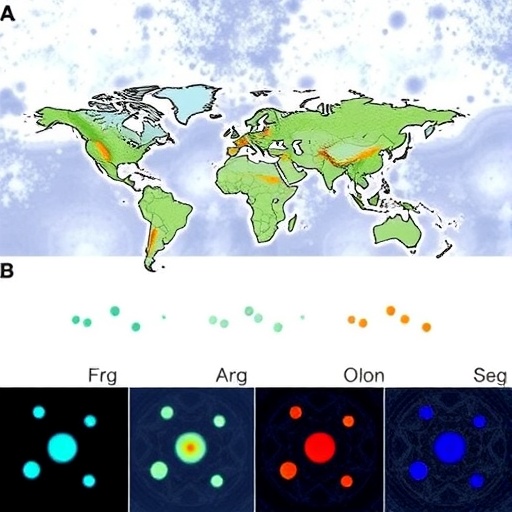In a groundbreaking advance that promises to reshape our understanding of somatic mutations and cellular evolution, a new study published in Nature presents an unprecedented deep dive into the patterns of genetic selection operating within human tissues. Leveraging extraordinarily high duplex sequencing depth combined with innovative negative selection testing methodologies, researchers have unveiled compelling evidence highlighting the nuanced landscape of somatic mutation tolerance and constraint across the human genome.
Contrary to prior assumptions grounded in somatic evolution studies, the research delineates a sharper resolution with which to detect negative selection on protein-coding genes—a phenomenon long overshadowed by the prevailing narrative that somatic mutations generally accumulate neutrally. This revelation pivots on the identification of genes displaying a striking depletion of non-synonymous mutations, flagging them as sites of significant selective pressure that actively purge detrimental alterations from cellular populations.
The discovery hinges on the application of a novel one-sided negative selection test, which triumphs where conventional approaches falter by sensitively uncovering negative selection signals, especially those that manifest through reduced frequencies of truncating single nucleotide variants (SNVs) such as nonsense mutations and essential splice site changes. These refined analyses enable the discrimination between mere neutral drift and selective elimination of disruptive mutations within essential genomic loci.
A particularly intriguing facet of the findings lies in the spotlight cast on a subset of nine genes exhibiting statistically significant negative selection. Among these, genes crucial for fundamental cellular processes—identified through independent CRISPR screens—take center stage. Notable examples include SF3B1, CHD4, and CDK4, all of which are instrumental in maintaining proper cellular function and integrity.
In a twist that enriches the biological narrative, the study elucidates that some genes, exemplified by PIK3CA, SF3B1, and TERT, embody dual roles within the somatic mutation landscape. These loci, while maintaining essential functions under their wild-type configurations, concurrently act as drivers of clonal expansions upon harboring specific activating mutations. Such dual functionality underscores a complex interplay whereby certain mutations shift the genetic element from a guardian of cellular stability to a propellant of evolutionary change.
Quantitative analyses consolidating somatic mutations across 17 panel genes verified as essential through CRISPR-based functional assays further affirmed the existence of robust negative selection, evidenced by a dN/dS ratio significantly below one. This metric crystallizes the concept that truncating mutations within these core genes are substantially purged from the somatic cell population, preserving gene integrity and function.
By stark contrast, the broader exome-wide mutation landscape, which excludes these carefully selected genes, remains largely neutral with respect to coding somatic mutations. Such neutrality signifies that, across the genomic expanse not under stringent selective constraints, the accumulation of mutations is predominantly stochastic, reflecting random genetic drift rather than adaptive pressures.
This meticulous approach uncovers layers of somatic genomic dynamics previously concealed by the limitations of lower-resolution sequencing techniques. The high duplex depth sequencing strategy employed not only enhances mutation detection sensitivity but also refines the interpretation of selection patterns by substantially reducing false positives and sequencing errors.
Furthermore, these insights carry profound implications for our understanding of tissue homeostasis, aging, and oncogenesis. The capacity to discriminate essential genes experiencing selective purging from those tolerating mutational variation enriches our grasp of how cellular populations maintain function despite continuous mutational insults and how perturbations in this balance might seed disease states where selection is subverted.
The demonstration that key essential genes can also harbor driver mutations points to a dualistic model of somatic evolution within tissues. Here, negative selection safeguards cellular functions by eliminating deleterious truncations, while targeted positive selection permits the expansion of clones bearing advantageous activating mutations, thereby contributing to the complex tapestry of somatic mosaicism.
This paradigm-shifting research sets the stage for future explorations aimed at decoupling the intertwined influences of mutation, selection, and cellular fitness within diverse tissue contexts. It also provides a promising blueprint for leveraging deep sequencing and rigorous statistical frameworks to uncover subtle evolutionary forces shaping human biology at the cellular level.
Ultimately, these findings elevate our capacity to map the terrain of somatic genetic variation with unprecedented clarity, empowering cancer researchers and evolutionary biologists alike to revisit foundational concepts of mutation accumulation and selection. As sequencing technologies continue to evolve, such integrative analyses will become indispensable tools for unraveling the intricate dance between genomic stability, mutation, and selection in human health and disease.
This study’s novel insights herald a new era wherein the granularity of somatic mutation selection dynamics can be interrogated with finesse, promising to illuminate the obscure corners of human genome evolution occurring within us every day. The implications resonate beyond fundamental science, potentially informing precision medicine approaches that aim to intercept pathological clonal expansions before they manifest clinical consequences.
Indeed, the recognition that essential haploinsufficient genes are preferentially shielded from truncating mutations by negative selection underscores a critical evolutionary safeguard. Disruptions in this protective mechanism may underpin a spectrum of pathological conditions, including cancer initiation and degenerative diseases, providing a fertile ground for therapeutic intervention strategies that harness or restore these natural selection processes.
In sum, this illuminating research crystallizes a nuanced portrait of somatic mutation and selection operating at a population scale within human tissues. It establishes a robust framework not only for understanding how somatic cells negotiate the genomic challenges posed by constant mutation but also for appreciating the evolutionary forces sculpting tissue architecture and function over a lifetime.
Subject of Research: Somatic mutation and selection patterns in human tissues, with emphasis on negative selection and essential gene constraints.
Article Title: Somatic mutation and selection at population scale
Article References:
Lawson, A.R.J., Abascal, F., Nicola, P.A. et al. Somatic mutation and selection at population scale. Nature (2025). https://doi.org/10.1038/s41586-025-09584-w
Image Credits: AI Generated
Tags: cellular evolution patternsduplex sequencing technologyessential splice site changesevolution of cellular populationsgenetic selection in human tissuesnegative selection methodologiesnon-synonymous mutation depletionprotein-coding gene mutationsselective pressure in genomicssomatic mutation researchsomatic mutation tolerancetruncating single nucleotide variants





